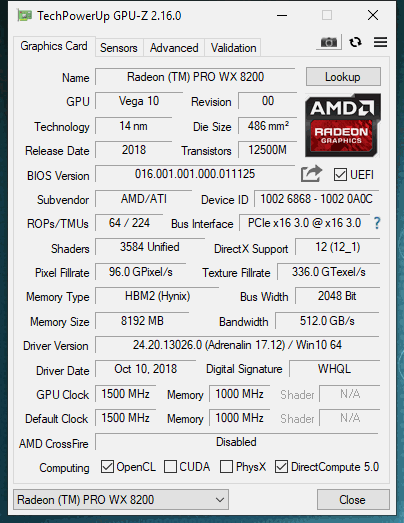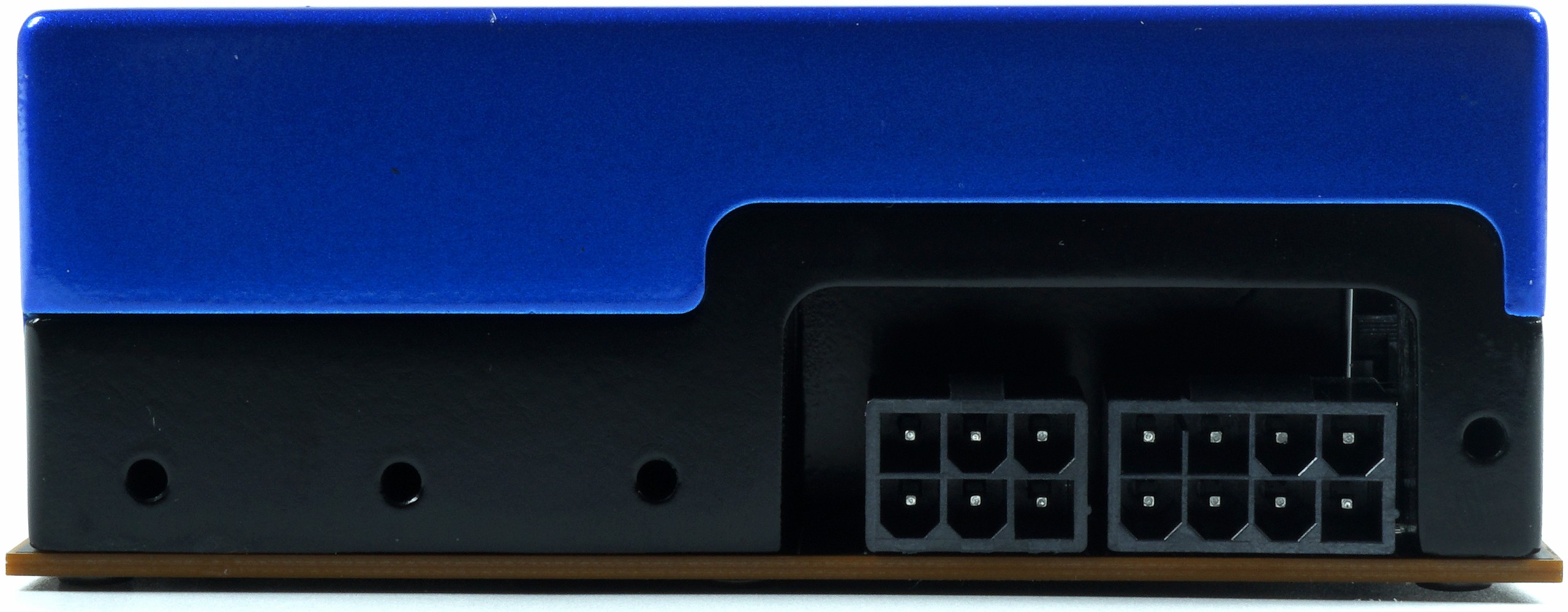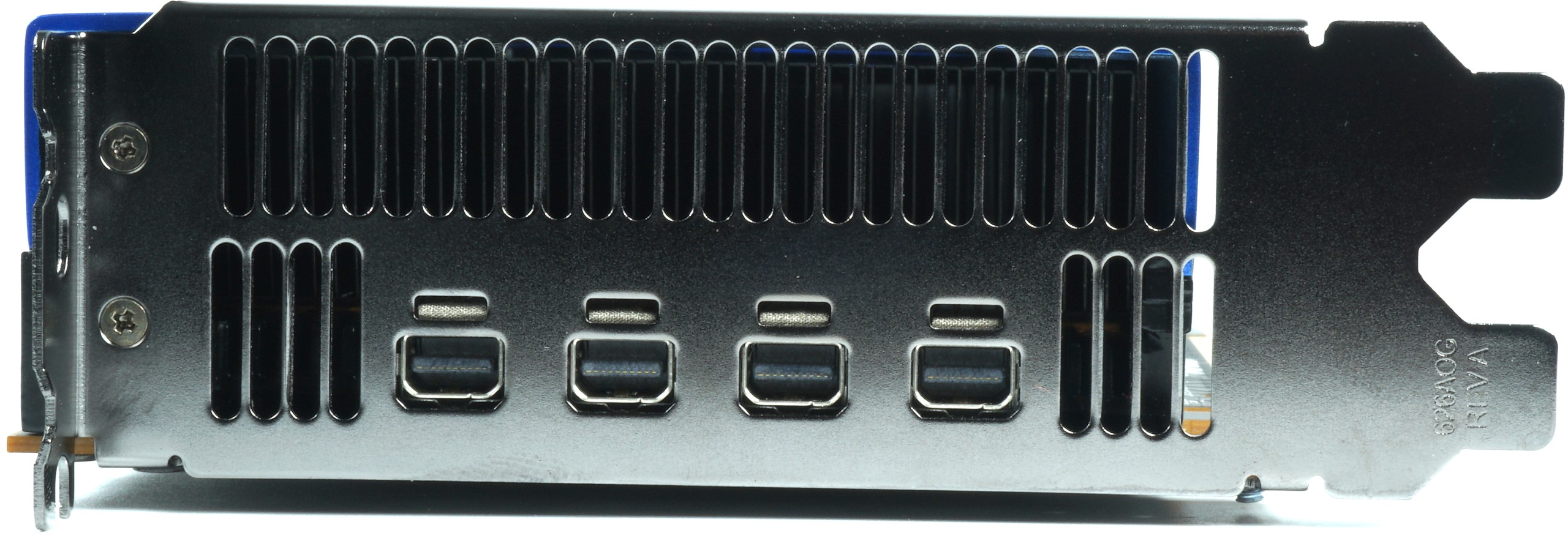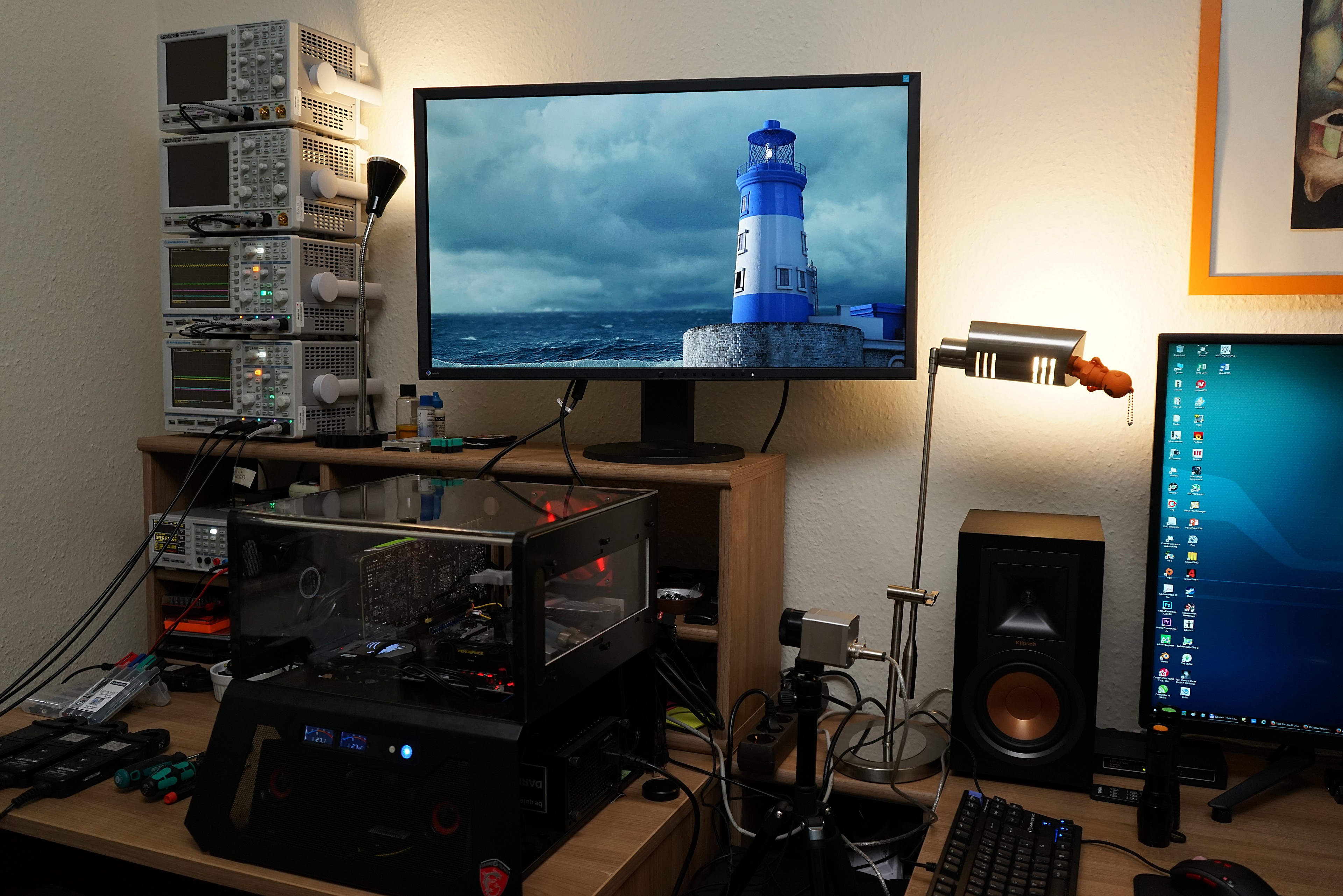With the Radeon Pro WX 8200, AMD is pushing a new workstation graphics card with Vega56, which is located below the Radeon Pro WX 9100 and Frontier Edition (both Vega64). The price is less than 1000 Euros, which is a unique selling point for a workstation graphics card in this performance class. You place yourself somewhere between a Quadro P4000 and the P5000. That's where there's a bigger gap in Nvidia.
At 965 grams, the card is still just under a kilo, but it is not a real lightweight. And that's a good thing, because the cooling has to come from somewhere. The card is 27 cm long between the outer edge of the slot panel and the end of the radiator cover, measures 10.5 cm from the top edge of the slot panel to the top edge of the graphics card housing and is 3.8 cm thick. There is no backplate and it is a pure dual slot card, which could also be operated in the Crossfire if necessary.
The stated performance of the smaller Vega chip is 21.5 TFLOPs for the Peak Half Precision (FP16), 10.75 TFLOPs for the Peak Single Precision (FP32) and peak precision double operations (FP64) with 672 GFLOPs.
You can see that you also have to invest something for this performance at the two external PCIe supply connections at the end of the card (8-pin + 6-pin). In addition, as is common with workstation graphics cards, the card can also be screwed to the end as needed to avoid hanging through the motherboard.
The Radeon pro offers compatibility with Radeon VR Ready Creator, AMD Eyefinity Technology (Professionals), Radeon ProRender, Radeon Rays, Unified Video Decoder (UVD) and Video Code Engine (VCE). It also supports AMD's DirectGMA technology and S400 Synchronization Modules.
Unlike the Radeon Pro WX 9100 and Frontier edition, the total number of outputs is limited to 4x Mini-DP 1.4. This allows you to create 4x 1920-1080, 4x 3840-2160, 3x 5120-2880 or 1x 7680-4320 (every 60Hz) displays. The larger Radeon Pro WX 9100, on the other hand, can control up to 6 displays.
The rest of the slot panel serves as an air outlet for the hot exhaust air of this Direct Heat Exhaust (DHE) card. Any further connection would actually even disturb. The screenshot of GPU-Z gives us a first impression, even if the GPU clock speeds do not correspond to reality. But more on that later.

I also want to spoil the next page quickly, because AMD leaves trampled Vega paths here, both in terms of the power supply and the thermal paste used. It's interesting.
Technical data and comparison maps
At the end of this introduction, once again the maps I used in the benchmark in the tabular overviews. First the three AMD cards, although unfortunately I was not able to organize a working Radeon Pro 9100. For this, my Frontier Edition has to come up with a cost of 999 USD for the launch and which can also be used with the Radeon Pro software.
| Gpu | AMD Radeon Pro WX 8200 |
AMD Radeon Pro Vega Frontier Edition |
AMD Radeon Pro WX 7100 |
| Computational units |
56 | 64 | 36 |
| Cores | 3,584 | 4,096 | 2304 |
| Chip | Vega 10 | Vega 10 XT | Polaris 10 XT |
| GPU Base Clock | 1,200 MHz | 1.384 MHz | 1188 MHz |
| GPU Boost |
1.530 MHz | 1,600 MHz | 1243 MHz |
| Storage expansion | 8GB HBM2 | 16GB HBM2 | 8GB GDDR5 |
| Memory clock |
1,000 MHz | 945 MHz | 1750 MHz |
| Memory bandwidth | 512 GB/sec | 484 GB/sec | 224 GB/s |
| Bus width | 2.048-bit | 2.048-bit | 256-bit |
| Tbp | 230 W | 300 W | 130 W |
| Price from approx. |
980 euros | 1200 Euro | 630 euros |
For a direct comparison, I also listed Nvidia's Quadro cards, which also had to compete for the test:
| Gpu | Nvidia Quadro P2000 | NVIDIA Quadro P4000 | NVIDIA Quadro P5000 |
NVIDIA Quadro P6000 |
| Computational units |
8 | 14 | 20 | 30 |
| CUDA Cores |
1024 | 1,792 | 2,560 | 3,840 |
| Chip |
GP106 | GP104 | GP104 | GP102 |
| GPU Base Clock |
1370 MHz | 1,202 MHz | 1.607MHz | 1.506MHz |
| GPU Boost | 1470 MHz | 1.480MHz | 1.733MHz | 1.645MHz |
| Storage expansion | 4GB GDDR5 | 8GB GDDR5 | 16GB GDDR5X | 24GB GDDR5X |
| Memory clock |
1.750 MHz | 1.901 MHz | 1.127 MHz | 1.127 MHz |
| Memory bandwidth | 140 GB/s | 243 GB/sec | 288.5 GB/sec | 432.8 GB/sec |
| Bus width | 128-bit | 256-bit | 256-bit | 384-bit |
| Tbp | 75 W | 105 W | 180 W | 250 W |
| Price from approx. |
440 euros | 770 euros | 1820 Euro | 4500 Euro |
I would like to note that daily prices can of course fluctuate. In addition, I only rated reputable online stores and no eBay auctions or unclear retailers on Amazon's Market Place.
Test system and measurement methods
We have already described the new test system and the methodology in detail in the basic article "How We Test Graphics Cards, as of February 2017" and therefore refer to this detailed basis for simplicity. Description. So if you want to read everything again, you are welcome to do so.
If you are interested, the summary in table form quickly provides a brief overview:
| Test systems and measuring rooms | |
|---|---|
| Hardware: |
Intel Core i7-8700K MSI Z370 Gaming Pro Carbon OC G.Skill TridentZ DDR4 3600 1x 1 TByte Toshiba OCZ RD400 (M.2, System SSD) 2x 960 GByte Toshiba OCZ TR150 (Storage, Images) Be Quiet Dark Power Pro 11, 850-watt power supply |
| Cooling: |
Alphacool Ice Block XPX 5x Be Quiet! Silent Wings 3 PWM (Closed Case Simulation) Thermal Grizzly Kryonaut (for cooler change) |
| Housing: |
Lian Li PC-T70 with expansion kit and modifications Modes: Open Benchtable, Closed Case |
| Monitor: | Eizo EV3237-BK |
| Power consumption: |
non-contact DC measurement on the PCIe slot (Riser-Card) non-contact DC measurement on the external PCIe power supply Direct voltage measurement on the respective feeders and on the power supply 2x Rohde & Schwarz HMO 3054, 500 MHz multi-channel oscillograph with memory function 4x Rohde & Schwarz HZO50, current togor adapter (1 mA to 30 A, 100 KHz, DC) 4x Rohde & Schwarz HZ355, touch divider (10:1, 500 MHz) 1x Rohde & Schwarz HMC 8012, digital multimeter with storage function |
| Thermography: |
Optris PI640, infrared camera PI Connect evaluation software with profiles |
| Acoustics: |
NTI Audio M2211 (with calibration file) Steinberg UR12 (with phantom power for the microphones) Creative X7, Smaart v.7 own low-reflection measuring room, 3.5 x 1.8 x 2.2 m (LxTxH) Axial measurements, perpendicular to the center of the sound source(s), measuring distance 50 cm Noise in dBA (Slow) as RTA measurement Frequency spectrum as a graph |
| Operating system | Windows 10 Pro (1809, all updates), Current WHQL Drivers As of 12/2018 |






































Kommentieren